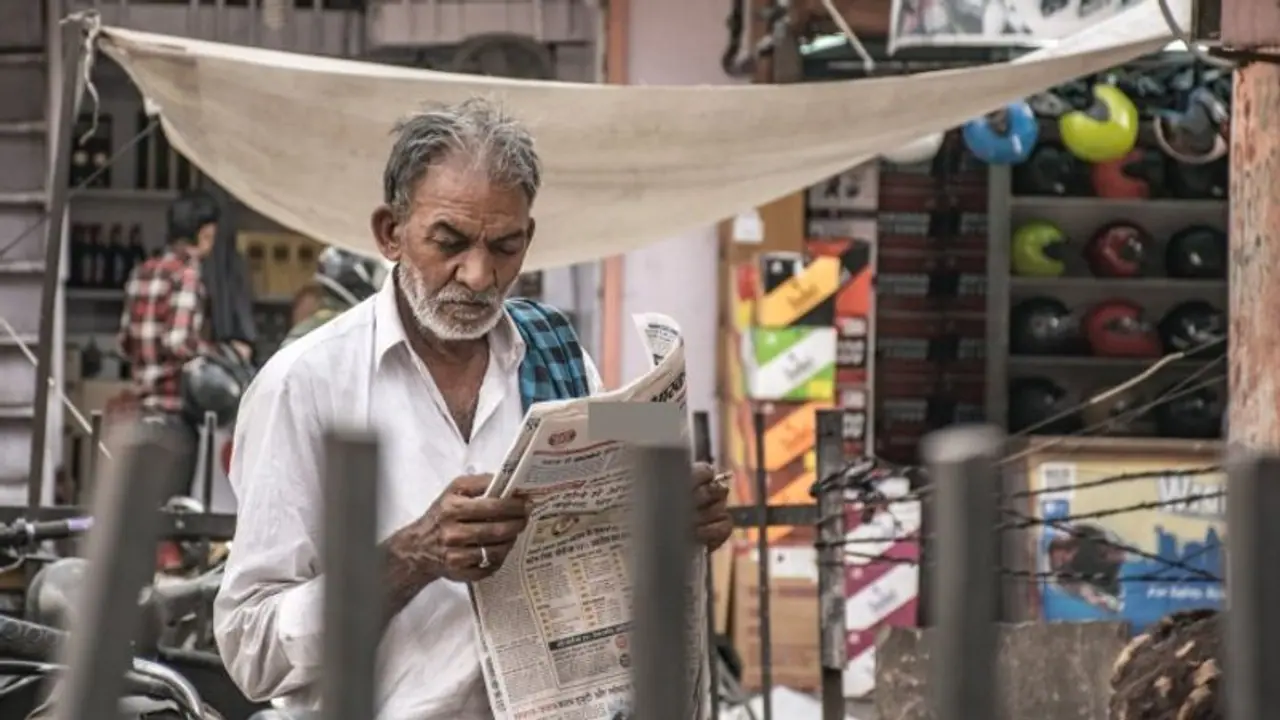The survey found that even though digital media rose in popularity with the surveyed population, mainly urban, young, and educated, television remains the most popular source.
A Reuters Institute for the Study of Journalism survey, aided by the Asian College of Journalism, in its Digital News Report 2021 has ranked India 31st amongst 46 countries in how much trust they have in their media.

The survey noted that much of the media in the country is controlled by corporations and political affiliations, and most are privately held and funded by advertising.
Print media was amongst the most popular forms of media that were consumed and trusted, but since the pandemic, that has shifted, and the market has moved toward online consumption.
According to the survey, renowned print news brands such as The Times of India, Hindustan Times and The Hindu and many other newspapers have experienced slowdown and losses.
The survey report finds that this has forced these companies to reduce salaries, terminate employees and close print editions due to the lack of economic activity.
News channel NDTV announced pay cuts for a limited time while web portal The Quint furloughed staff and was unable to continue to move forward with its planned television division after three years of not getting its broadcasting license.
The survey's data comes mainly from English-speaking, relatively more affluent young Diaspora with higher levels of formal education and likely live in cities compared to the larger Indian population who comprise the majority.
The survey found that even though digital media rose in popularity with the surveyed population, mainly urban, young, and educated, television remains the most popular source.
India has almost four hundred channels (392) which include both national and regional language channels; broadcast channels are self-regulated and are privately-owned with open political affiliations.
The report says that a culture of 24X7 news channels operating on 'Breaking news' models and polarised debates often distort and sensationalise the news.
Elaborating on the credibility crisis that news channels went through last year, the report recalled how in October last year, Television Rating Points released by the Broadcast Audience Research Council came under the lens.
The Mumbai Police accused Republic TV and two Marathi entertainment channels of tampering with metering devices installed in sample households to boost ratings. Ironically, Republic TV was not even mentioned in the complaint received by the police.
Even though the investigation is still on and despite these accusations, the considerable popularity enjoyed by Republic TV's online and offline platforms -- which have both increased considerably since our last survey in 2019 -- indicate the growing popularity of right-wing ideology propagated by the ruling party in India, the survey observed.
India's media market is heavily mobile-focused, which means that, with the help of cheap devices and data charges, 73% of the population accesses the news through smartphones and the remaining 37% use computers, the survey found.
It has more than 600 million active internet users who only use the Internet through their mobiles.
Amongst the survey respondents, social media was widely used for news. However, it also gave way to two main issues -- misinformation and hate speech.
The survey notes that leading political party members and other individuals who follow these parties have been alleged to systematically spreading false information using social media.
The report cited the instance that occurred in late 2020 when Facebook India's policy head quit her job after the social media giant was accused of being deliberately lenient on ruling Bharatiya Janata Party supporters, who allegedly violated hate speech rules.
The report also notes that due to such instances, the number of independent fact-checking organisations with international tech aid has grown whilst mainstream media houses have formed their own fact-checking teams.
The Indian government itself has come up with what the report calls 'controversial', new proposals to monitor social media, news websites and Over The Top content providers. However, the report writers claimed that these steps do not just target misinformation. Rather, they target any kind of opposition or objection.
The survey noted how the new guidelines expect social media platforms to trace the origin of information identified as misleading or objectionable based on an order from a court of competent authority to limit false and objectionable information on social media platforms.
However, the report noted that authorities have on several occasions asked platform companies to block posts, including those by activists, journalists, and opposition politicians.
DigiPub, which is a group of digital news organisations formed in 2020, has expressed that these rules go against the 'fundamental principles of news' as they give the government control to remove news content how they see fit.
The report pointed out that India has slipped in the Press Freedom Index of Reporters Without Borders consistently in the last few years. It is ranked 142 out of 180 countries.
RSF's 2021 report discusses and points to the treatment of journalists in the country, which includes increasing violence, threats of death and rape and trolling on social media aided by the use of sedition laws as a measure against the criticism of the government and its policies.
Earlier this year, the country's status, as accorded by Freedom House, was changed from 'free' to 'partly free'.
